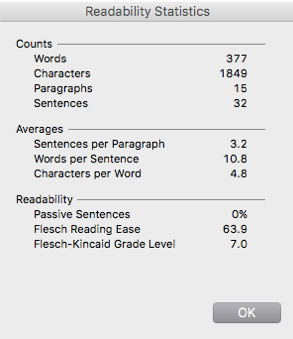I’ve spent the last 20 years as a communications consultant working with lawyers, law firms, bar associations, and law schools. It’s been a fascinating and rewarding career. Here are five things I’ve learned:
1. Identify and Understand Your Audience.
Lawyers communicate as if we are always talking with other lawyers. In law school, we train to do it, yet a big part of the job is communicating with lay people. Therein lies a fundamental mistake. The meaning of all communication—written or oral—is in the mind of the audience, not the speaker. You understand the meaning of your words, but the message may be garbled in the mind of the recipient.
Even professionals who are familiar with legalese may have different expectations and understanding than legal professionals. Understand who is receiving this communication, then go one step further: Tell your audience what it needs to know, rather than what you wish to say. This requires a bit of effort. Don’t make assumptions about what your audience knows. Identify what you know they know. Learn the vocabulary of their industry if you can, then craft your communications so your words (and you) meet the needs of your actual nonlawyer audience. You may discover that little needs to change, but those changes are the key to effective and efficient communication.
One place where lawyers forget this rule is in our bios. We tend to focus on what other lawyers want to know about us (I went to Blah Blah Law School), and forget to tell our clients what they want to know (I have 20 years of experience with your field.) Strike a balance.
2. Omit Needless Words
Strunk and White were right. Lincoln was right. Writing is easy. Editing is hard. (When I first wrote that sentence, it read, “It’s editing that is hard.”) Paring down your language almost always improves it and avoids burying your core message.
I’d never suggest that you write with no color or flair. Don’t dumb it down, but favor clarity and oppose verbosity and repetition. Watch the number of times you say “I” and “we.” Make your point with the maximum impact per word. Polish your communications until they shine.


One tool that may help you is the Flesch Test. This is an application that tells you the reading level of your writing. It’s built into Word (under Tools) and there are more sophisticated versions online.
A good Flesch score is 65, and a reading level of 7th to 10th grade is perfect.
The New York Times generally has a 10th-grade Flesch level. This article has a 7th-grade reading level.
3. Start at the Beginning and End at the End
This is the organizational counterpart to brevity, but it also embodies Rule #1.
When considering your audience, a focus on organization means that you might start with a brief explanation, a bit of background, or a recap. Make it easy for your audience to jump in and understand your message, follow your explanation or argument, and arrive at the proper conclusion with you. Don’t send them scrambling for another document or googling a legal theory.
An outline may help, or outline what you’ve already written to confirm an orderly flow of ideas. Cut-and-paste commands are the best tools ever devised for writing organization—I started writing in the days of literal cutting and pasting, and my writing is better now than it was then.
Do you need to take a side trip? Consider a footnote, a literal sidebar, or an aside in a speech. There are lots of ways to give an audience a bit of extra information. Just don’t wander off and forget where you were headed.
4. Identify and Stick to a Style
When I began as a legal writer, I adopted a formal and stilted style. I was young and wanted to appear experienced and professional. There are still times when that style is appropriate, as when writing demand letters. Over time, however, I discovered that my writing had more impact when it was more conversational. I’m often introducing an audience to new ideas and want it to seem more like a discussion than a lecture. E-mail has also had a dramatic impact on legal writing, so highly structured, formal language may alienate a lay audience.
Once you identify your style for a particular communication, stick to it. Don’t wander off midway.
5. Update Your Communications Regularly
Lawyers are great at forms. One of the most common mistakes lawyers make is to create documents, bios, ads, or website text and then leave it for years without updating. I got an e-mail the other day from a lawyer with some bottom boilerplate that wasn’t consistent with current law. Does that give me confidence in that lawyer? Probably not. Refreshing your communications not only makes them more timely and accurate, it also blows the linguistic dust off. Create a schedule and regularly update your website, e-mail template, and biography. It’s like a little facelift.
All five rules boil down to one: Have empathy for your audience, and your communications will hit their mark.


